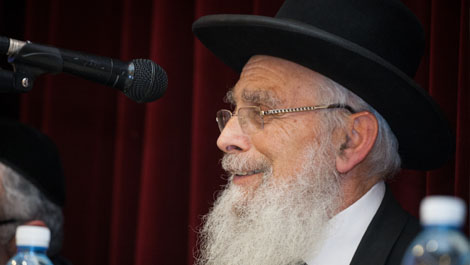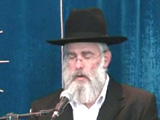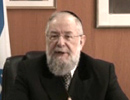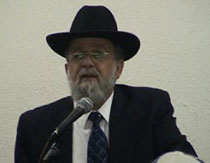Beit Midrash
- Sections
- Chemdat Yamim
- Parashat Hashavua
- Torah Portion and Tanach
- Shmot
- Vayakhel
Parashat Vayakhel tells in a very repetitive, detailed manner that that which was commanded to be made and constructed in Parashat Teruma and some of Parashat Tetzaveh was done correctly. The people who were commanded to do the work are referred to almost entirely by pronouns. The commands, presumably addressed to Moshe, use primarily the word "v’asita" (second person singular). In several places, it says "v’asu" (third person plural). That presumably implies that when Moshe was not to do something, it was to be done by a group of other people.
In the meantime, the Torah introduces two people (Betzalel and Ohaliav) as well as a group of divinely inspired wise craftsmen (see Shemot 31:1-6). In our parasha, Moshe seems to be removed from the list of doers, and women were added to the list in regard to work with hides/fabrics (ibid. 35:25-29). In the description of the work, again it predominately uses pronouns instead of names, and the great majority of times the pasuk says "vaya’as" (third person singular), with a smattering of vaya’asu (third person plural).
The pasuk that stands out, after 31 p’sukim describing work done by the nameless, is "Betzalel made the ark" (ibid. 37:1). Why Betzalel is spelled out specifically here is the subject of a machloket between early commentators. Ibn Ezra (ad loc.) says that from this point on (the ark being the first of the vessels listed one after the other), the work, regarding all the vessels, was all done by Betzalel himself. Only in the previous section (the production of the structure of the Mishkan) were other people involved.
The Ramban (Shemot 36:8) says that Betzalel personally made only the ark. He explains that while, from the perspective of craftsmanship, the ark was one of the simpler vessels, it was the most spiritually profound one, which needed the special spiritual touch that Betzalel alone possessed. (It is interesting that under such circumstances, Moshe himself would not have built it.) According to both the Ibn Ezra and the Ramban, in many of the instances in which the Torah says "he made," it is not talking about Betzalel specifically, but one of the anonymous wise craftsmen. "They made" is certainly referring to any group of anonymous people.
In any case, there must be a reason that there is a great deal of inconsistency, with no apparent pattern, on whether to use the singular or the plural in describing the construction of the Mishkan. The simple and, I would argue, the correct explanation is that the tension between the individual and the collective is very much at the heart of the construction of the Mishkan. On the one hand, all had to be done "as Hashem commanded Moshe," without room for individual expression. On the other hand, in a matter so holy, even the same identical act of construction can be affected significantly by the sanctity and the mindset of the person who performs it (see Ketubot 5a). The craftsmen were thus at once acting as anonymous members of the nation and as unique, special individuals.
This tension between conformity and individuality is a part of all of our lives, in going about both our religious and our national obligations. May we be successful in finding the right balance.

Parashat Hashavua: From Paroh to Hamas and Iran – In Those Days at this Time
Rabbi Yossef Carmel | Kislev 5786

Parashat Hashavua: The Journey … from Charan to Mt. Moriah and Beyond
Rabbi Yossef Carmel | Cheshvan 5786

“You Shall Do for Me a Sanctuary... Tabernacle”
Rabbi Yossef Carmel | 28 Shvat 5768

Judging “Shofet”
Rabbi Yossef Carmel | 5772

Rabbi Daniel Mann

Davening Early on Shavuot
Iyar 26 5777

Cooking for Shabbat at the End of Yom Tov
Iyar 20 5783

Encouraging a Child to Criticize His Parent
5774
























